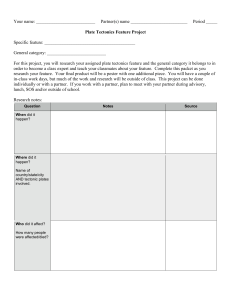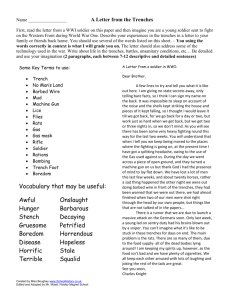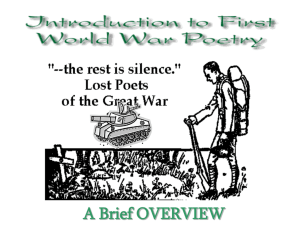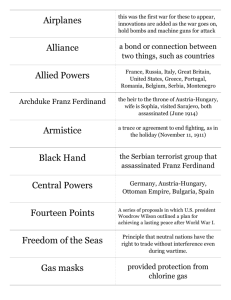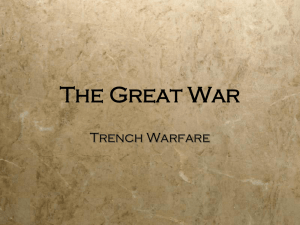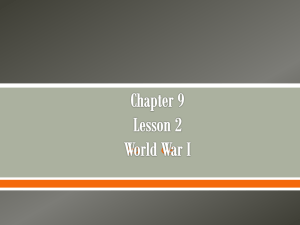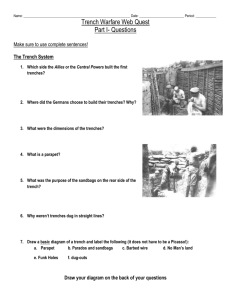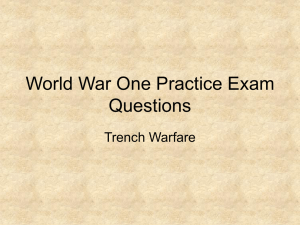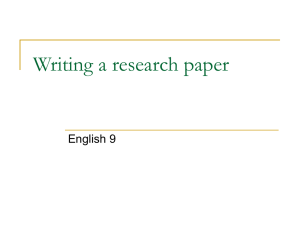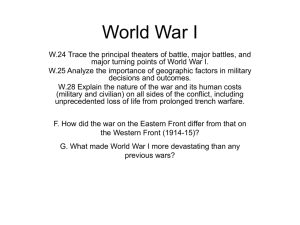trench_warfare
advertisement
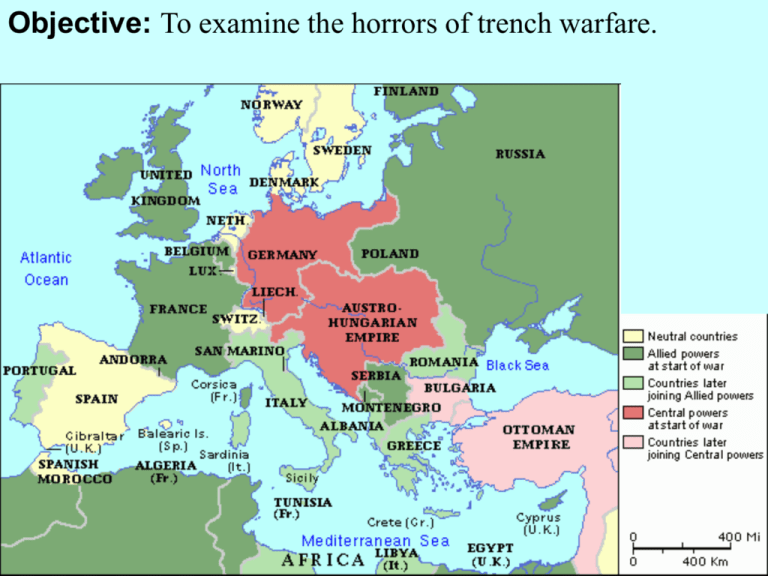
Objective: To examine the horrors of trench warfare. Trench Warfare Trench Warfare – type of fighting during World War I in which both sides dug trenches protected by mines and barbed wire Cross-section of a front-line trench British trench, France, July 1916 (during the Battle of the Somme) French soldiers firing over their own dead An aerial photograph of the opposing trenches and no-man's land in Artois, France, July 22, 1917. German trenches are at the right and bottom, British trenches are at the top left. The vertical line to the left of centre indicates the course of a pre-war road. Trench Rats Many men killed in the trenches were buried almost where they fell. These corpses, as well as the food scraps that littered the trenches, attracted rats. Quotes from soldiers fighting in the trenches: "The rats were huge. They were so big they would eat a wounded man if he couldn't defend himself." "I saw some rats running from under the dead men's greatcoats, enormous rats, fat with human flesh. My heart pounded as we edged towards one of the bodies. His helmet had rolled off. The man displayed a grimacing face, stripped of flesh; the skull bare, the eyes devoured and from the yawning mouth leapt a rat." Officers walking through a flooded communication trench. A photograph of a man suffering from trench foot. Dulce Et Decorum Est, by Wilfred Owen Bent double, like old beggars under sacks, Knock-kneed, coughing like hags, we cursed through sludge, Till on the haunting flares we turned our backs And towards our distant rest began to trudge. Men marched asleep. Many had lost their boots But limped on, blood-shod. All went lame; all blind; Drunk with fatigue; deaf even to the hoots Of disappointed shells that dropped behind. GAS! Gas! Quick, boys!-- An ecstasy of fumbling, Fitting the clumsy helmets just in time; But someone still was yelling out and stumbling And floundering like a man in fire or lime.-Dim, through the misty panes and thick green light As under a green sea, I saw him drowning. In all my dreams, before my helpless sight, He plunges at me, guttering, choking, drowning. If in some smothering dreams you too could pace Behind the wagon that we flung him in, And watch the white eyes writhing in his face, His hanging face, like a devil's sick of sin; If you could hear, at every jolt, the blood Come gargling from the froth-corrupted lungs, Obscene as cancer, bitter as the cud Of vile, incurable sores on innocent tongues,-My friend, you would not tell with such high zest To children ardent for some desperate glory, The old Lie: Dulce et decorum est Pro patria mori. (“How fitting and sweet it is to die for one’s country.”) Soldiers digging trenches while protected against gas attacks 'Gassed'. Painting by John Singer Sargent, 1918/1919. Poison Gas Deaths: 1914-1918 Country Non-Fatal Deaths Total British Empire 180,597 8,109 188,706 France 182,000 8,000 190,000 United States 71,345 1,462 72,807 Italy 55,373 4,627 60,000 Russia 419,340 56,000 475,340 Germany 191,000 9,000 200,000 Austria-Hungary 97,000 3,000 100,000 Others 9,000 1,000 10.000 1,205,655 91,198 1,296,853 Total British Vickers machine gun crew, western front, World War I. Western Front – over 400 miles of trenches across Belgium and France · Most offenses resulted in heavy casualties but gained little territory. Military Casualties in World War I: 1914-1918 Germany 1,935,000 United States 116,516 Russia 1,700,000 Bulgaria 87,495 France 1,368,000 Belgium 45,550 Austria-Hungary 1,200,000 Serbia 45,000 British Empire 942,135 Greece 23,098 Ottoman Empire 725,000 Portugal 8,145 Italy 680,000 Montenegro 3,000 Romania 300,000 Japan 1,344

